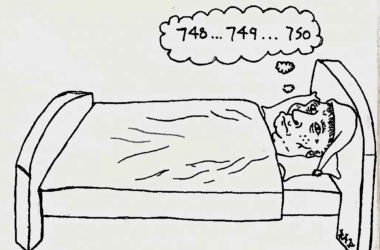Nov. 21, 2019 marked the 236th anniversary of the first untethered, manned hot air balloon flight. The flight was the result of the work of Joseph and Etienne Montgolfier, brothers from the small town of Vandalon, France. Their father’s lucrative paper company enabled them to fund their scientific endeavours and also provided them with lots of testing materials. The brothers discovered that filling a lightweight paper fabric bag with hot air caused the bag to float, since the heated air becomes lighter than its surrounding air, and the balloon rises.
For hot air balloons to carry a 1,000-pound object, 65,000 cubic feet of air must be heated, a number equivalent to the weight of 2,560 hot tubs. The brothers, however, were not aware of this, and initially believed that they had found a new gas lighter than air.
Although the Montgolfier brothers’ 1783 hot air balloon flight was one of the first times that humans took to the skies, humanity’s itch to fly was present much earlier. After the invention of the kite in 400 BC China, people unsuccessfully tried to fly like birds by strapping wings to their arms.
The hot air balloon did, however, inspire further exploration into the world of flying. In 1799, George Cayley created a glider for humans to drift above the ground. Later, in 1891, Otto Lilienthal created a more complicated glider that could fly longer distances. With the help of the engine, Orville Wright piloted the ‘Flyer’ plane into the air in North Carolina in 1903.
All of these flying machines used a mechanism to lift themselves off of the ground. Lift, weight, thrust, and drag are four forces that determine how high and fast a machine will take off into the air. While hot air balloons rise due to a temperature difference between the air in the balloon and that of the surrounding air, a plane is able to take off due to the shape of its wings. Since an airplane’s wings have a curved top shape with a flat bottom, the air is able to glide over the top of the wing faster than the air on the bottom, enabling it to take to the air.
The Montgolfier brothers first displayed their hot air balloon discovery on June 4, 1783 in Annonay, France, when they burned straw and wool to send an unmanned balloon 3,000 feet into the sky. In their second test, they sent a sheep, a rooster, and a duck into the air. At the time, a sheep’s physiology was considered similar to that of a human’s, making it a good non-human test subject. The duck and the rooster were the controls in the experiment, since they were used to flying, although the rooster to a much lesser degree.
After these animals successfully completed their hot air balloon mission unharmed, the first human passengers took flight, achieving what had previously been considered an impossible task in front of an excited crowd.
“We observed [the balloon] lift off in the most majestic manner,” spectator Benjamin Franklin wrote in his journal. “When it reached around 250 feet [76 metres] in altitude, the intrepid voyagers lowered their hats to salute the spectators. We could not help feeling a certain mixture of awe and admiration.”
The sentiments that Benjamin Franklin expressed when viewing the majestic hot air balloon still hold true for people today. Every August in Montreal, the International Balloon Festival attracts people from all over the world to witness untethered, manned balloons jet off into the sky. The Montgolfier brothers would not be disappointed with the evolution of flight that their invention initiated and the joy that it has brought to generations.









